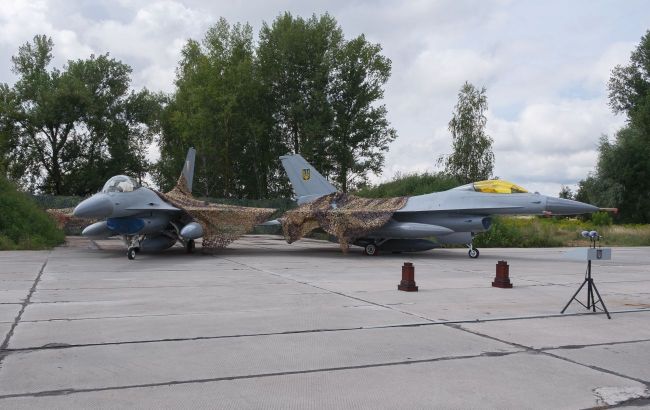F-16s survive Russian missiles thanks to this clever Ukrainian tactic
 F-16 (Archive photo: Vitalii Nosach, RBC-Ukraine)
F-16 (Archive photo: Vitalii Nosach, RBC-Ukraine)
Ukrainian military airfields have become a primary target during Russian airstrikes. However, the Armed Forces of Ukraine have adopted unique strategies that have allowed them to avoid losing a single fighter jet during such attacks, according to Business Insider.
The outlet notes that dispersal and mobility have become critically important for Ukraine’s Air Force. However, since Ukraine has been unable to build sufficient supporting infrastructure, the military relies on alternative solutions.
In particular, the destruction of fighter jets has been prevented through dispersal. US General James Hecker believes Ukraine has lost relatively few aircraft on the ground because they very rarely take off and land at the same airfield.
This is due to the fact that when servicing F-16s, Ukraine relies on mobile units mounted on trucks, which have replaced traditional fixed bases.
“One of the new complexes has a command post and workstations for mission planning and briefings for pilots, as well as space for personnel to rest, and another comes with a workshop for testing and prepping weapons and trucks for putting munitions on the planes,” the outlet reports.
Meanwhile, Russia did not disperse its aircraft until its airfields started coming under drone attacks. As a result, Ukrainians have had more success targeting Russian air bases than Russians have had targeting Ukrainian ones.
F-16s for Ukraine
The Netherlands, Denmark, and Belgium have taken the lead in the international fighter jet coalition to provide F-16s to Ukraine. In July 2024, the Netherlands officially approved the export of 24 aircraft, and by August, the first F-16s had arrived for the Ukrainian Air Force. Specific details about the total number and sources of delivery remain classified.
At the end of August, Ukraine lost one of the received fighter jets during the defense against a massive Russian attack. The crash on August 26 resulted in the death of experienced pilot Oleksii Mes, known by the call sign Moonfish.
On July 22 of this year, the Air Force received the first unique mobile maintenance units for servicing F-16 fighter jets. The very next day, the Air Force showcased what these mobile units look like.

